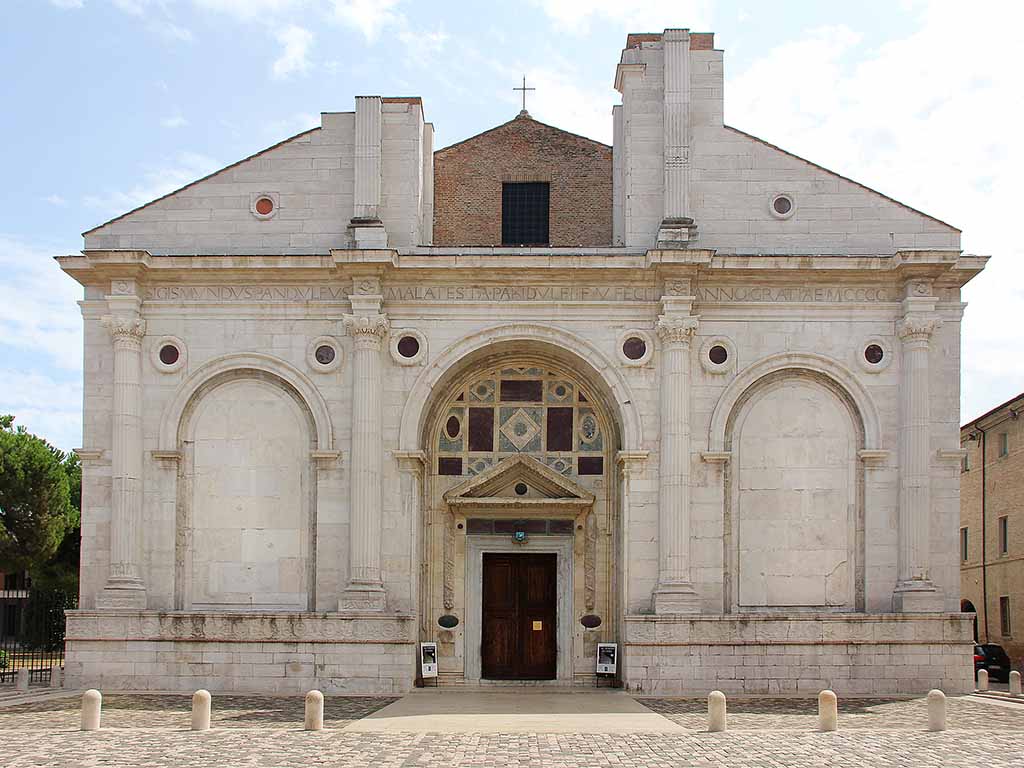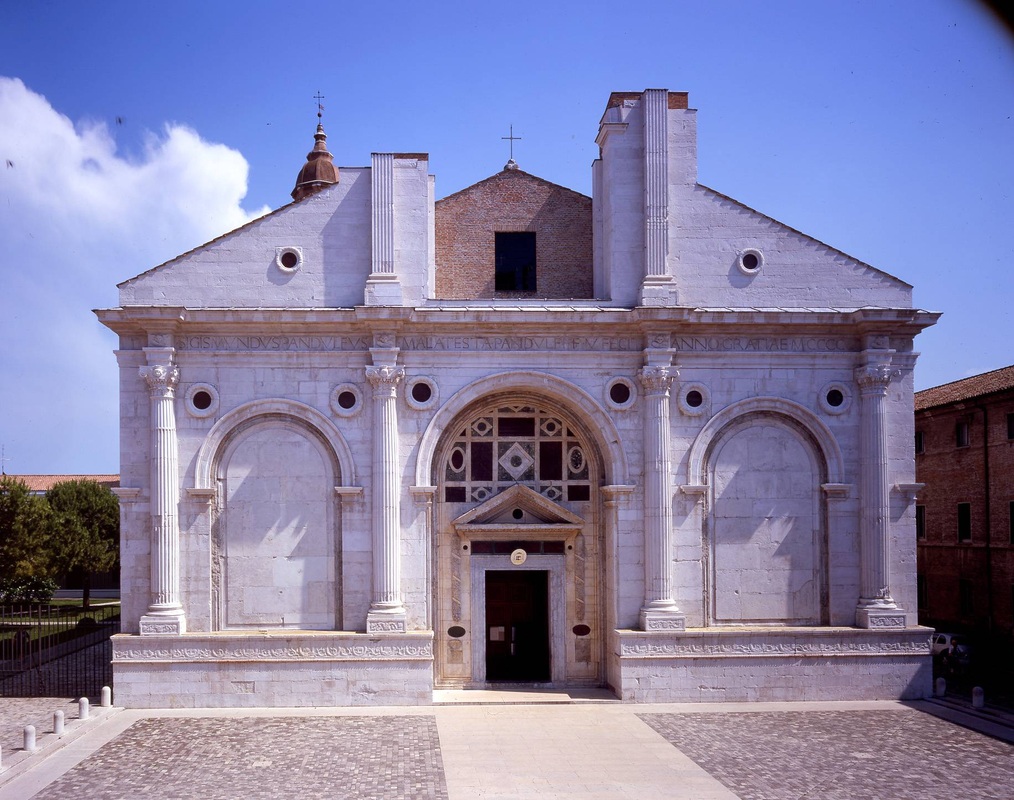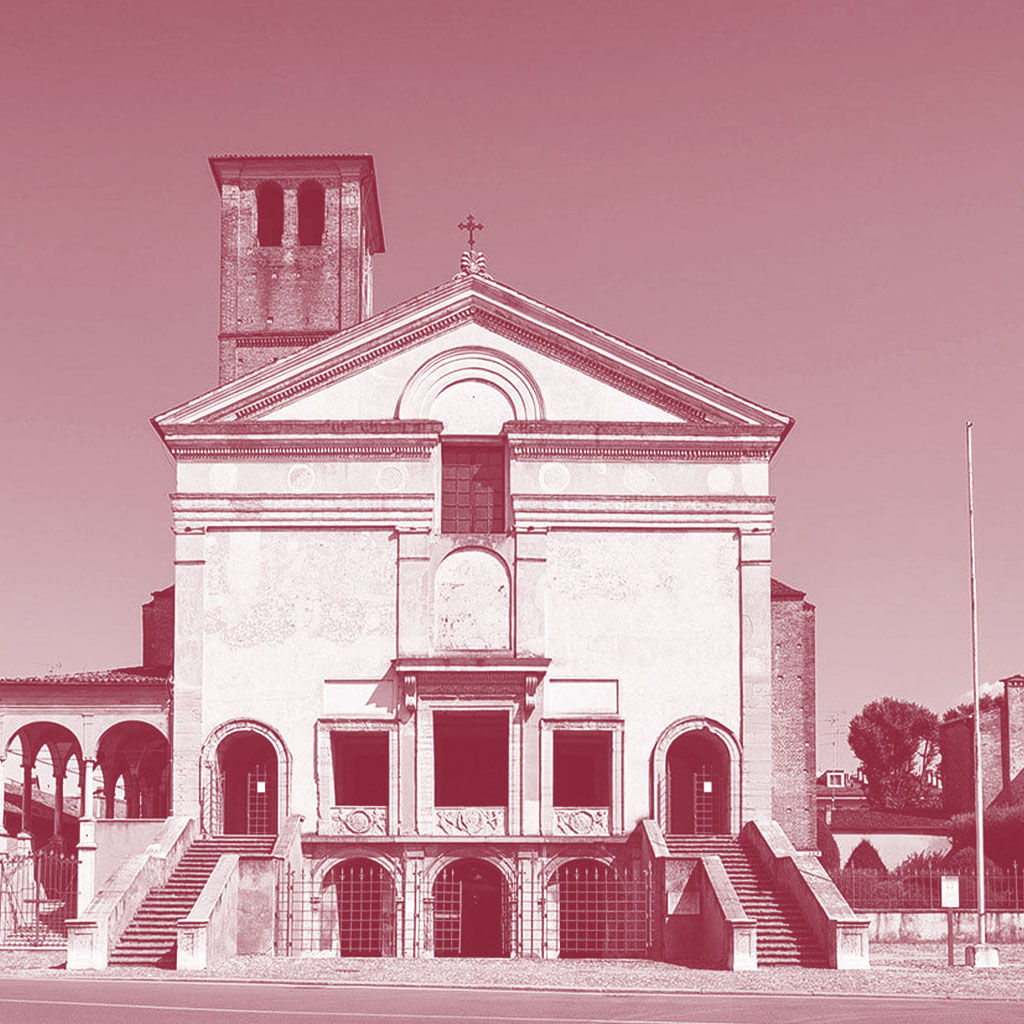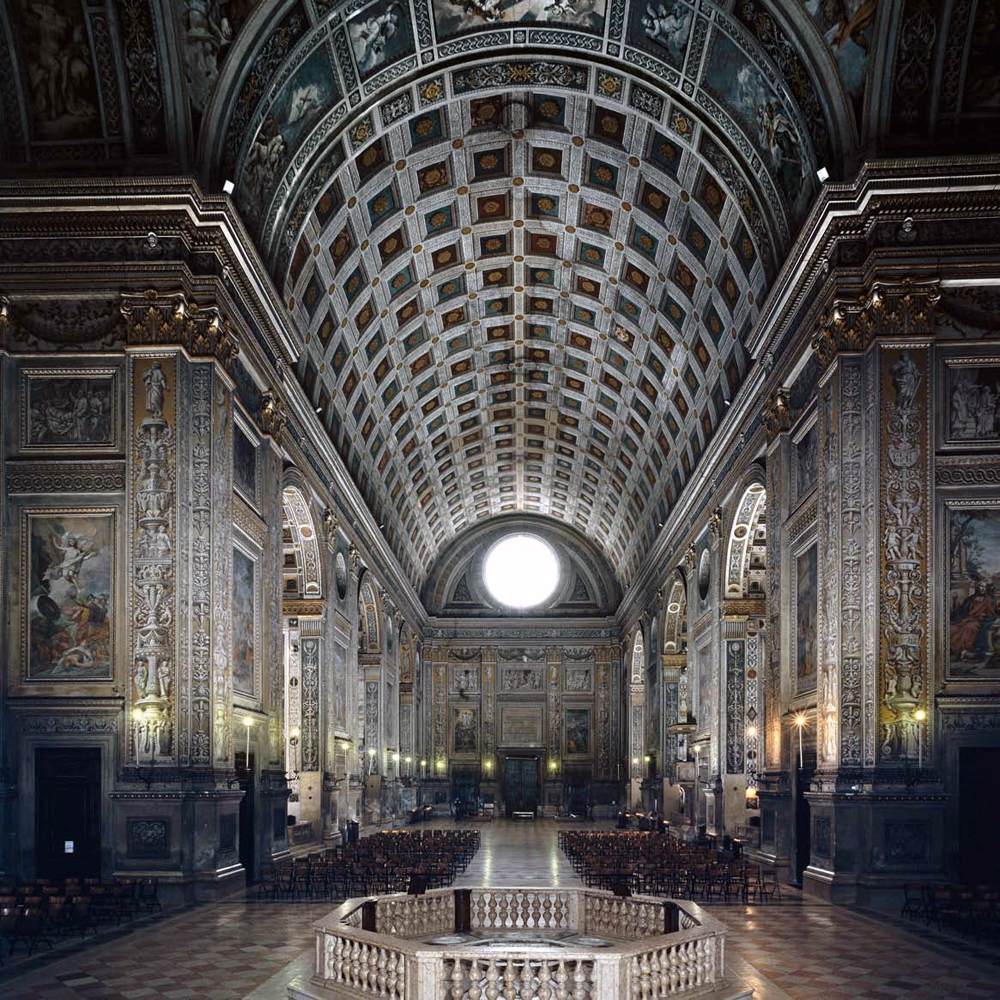
Leone Battista Alberti Tempio Malatestiano.jpg Sztuka renesansu
Tempio Malatestiano, Cathedral of Rimini is one of artworks by Leon Battista Alberti. Artwork analysis, large resolution images, user comments, interesting facts and much more.. He did not spare the funds of Malatesta and invited to design the temple of Leon to Battista Alberti, who after his death Brunelleschi could be considered the first.

Il Tempio Malatestiano di Leon Battista Alberti Villegiardini
Leon Battista Alberti, (born Feb. 14, 1404, Genoa—died April 25, 1472, Rome), Italian humanist, architect, and principal initiator of Renaissance art theory. In his personality, works, and breadth of learning, he is considered the prototype of the Renaissance "universal man.". Childhood and education. The society and class into which Alberti was born endowed him with the intellectual and.

Leon Battista Alberti, il Tempio Malatestiano 145054
Alberti Leon Battista Alberti (1404-1472) worked as an architect from the 1450s onward, principally in Florence, Rimini, and Mantua.. His facades of the Tempio Malatestiano (Rimini, 1450) and the Church of Santa Maria Novella (Florence, 1470) are based on Roman temple fronts. His deep understanding of the principles of classical.

Alberti's Work LEON BATTISTA ALBERTI
The Tempio Malatestiano ( Italian: Malatesta Temple) is the unfinished cathedral church of Rimini, Italy. Officially named for St. Francis, it takes the popular name from Sigismondo Pandolfo Malatesta, who commissioned its reconstruction by the famous Renaissance theorist and architect Leon Battista Alberti around 1450. [1] History

Alberti Tempio Malatestiano, esterno Rimini Architecture Classique
Applying Classical arithmetic techniques to analyze Alberti's Tempio Malatestiano, this paper demonstrates that its design corresponds to Alberti's system based on geometrical features of the cube depicting 'natural relationships that cannot be defined as numbers'.. Leon Battista Alberti as Author of Hypnerotomachia Poliphili. Nexus.

Tempio Malatestiano Façade by ALBERTI, Leon Battista
The facade of the Tempio Malatestiano church in Rimini. It was designed by the Italian Renaissance architect Leon Battista Alberti (1404-1472 CE). Mid-15th century CE. Its design is influenced by the triumphal arch of ancient Rome.

Leon Battista Alberti Tempio Malatestiano (EN Malatesta Temple
Tempio Malatestiano, burial chapel in Rimini, Italy, for Sigismondo Pandolfo Malatesta, the lord of the city, together with his mistress Isotta degli Atti and the Malatesta family.. 1446, from the Gothic-style Church of San Francesco according to the plans of the Early Renaissance Florentine architect Leon Battista Alberti. Construction was.

Leon Battista Alberti San Francesco, Rimini
Il Tempio malatestiano, usualmente indicato dai cittadini come il Duomo e dal 1809 divenuta cattedrale col titolo di Santa Colomba [1] [2], è il principale luogo di culto cattolico di Rimini.

Tempio Malatestiano, Leon Battista Alberti, Rimini, 1453 Architettura
'Tempio Malatestiano (Rimini)' was created in 1450 by Leon Battista Alberti in Early Renaissance style. Find more prominent pieces of architecture at Wikiart.org - best visual art database.

Tempio Malatestiano (Rimini), 1450 Leon Battista Alberti
Leon Battista Alberti. Mantova Museo Urbano Diffuso. The interior of the church is a curious combination. Not only was it built during an extensive period of construction with numerous redesigns, not only was it renovated over the centuries, but the existing roof actually differs from Alberti's original design. The church was abandoned, and in.

MACA Tempio Leon Battista Alberti Musei Civici Mantova
Leon Battista Alberti Leon Battista Alberti, self-portrait plaque, bronze, c. 1435; in the National Gallery of Art, Washington, D.C. (more) The achievement of Leon Battista Alberti testifies to the formative power and exhaustive scope of earlier Italian humanism.

Tempio malatestiano, ri, facciata, capitello Leon Battista Alberti
Leon Battista Alberti was born in 1404 in Genoa, the hometown of his mother, Bianca Fieschi, widow of a Grimaldi. His father, Lorenzo di Benedetto Alberti, belonged to a wealthy, powerful family of Florentine merchants and bankers, exiled by their rivals, the Albizi. After a short stay in Venice, the Alberti family went to Padua (1416) where.

leon battista alberti / tempietto del santo sepolcro . firenze (1467
Italian Architect, Artist, and Author Born: February 14, 1404 - Genoa, Italy Died: April 25, 1472 - Rome, Italy Movements and Styles: Early Renaissance Leon Battista Alberti Summary Accomplishments Important Art Biography Influences and Connections Useful Resources

Rimini, Tempio Malatestiano Rimini italy, Rimini, Italy
Leon Battista Alberti ( Italian: [leˈom batˈtista alˈbɛrti]; 14 February 1404 - 25 April 1472) was an Italian Renaissance humanist author, artist, architect, poet, priest, linguist, philosopher, and cryptographer; he epitomised the nature of those identified now as polymaths.

Leon Battista, Alberti, tempio malatestiano, dal 1450, Rimini Palace
The Tempio Malatestiano (as it became known) was a deeply serious building, evoking the power and severity of Ancient Roman architecture.

Spencer Alley Alberti, Donatello, Ammanati
The construction of San Sebastiano's Church (aka Tempio Leon Battista Alberti) began in 1460 under the supervision of Leon Battista Alberti, a famous polymath who also invented Western.